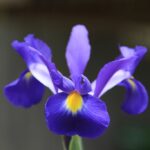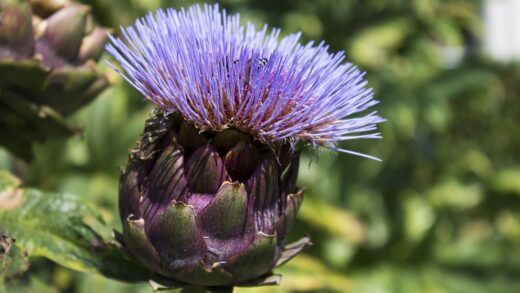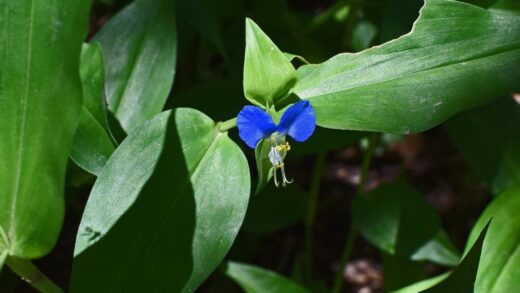French lavender is renowned for its ability to thrive in conditions that many other ornamental plants would find challenging, particularly in lean, nutrient-poor soils. This characteristic is a direct reflection of its Mediterranean heritage, where it grows wild on rocky, alkaline hillsides. Consequently, the plant has very modest nutrient requirements and an overzealous approach to fertilization can be far more detrimental than providing no fertilizer at all. Rich, fertile soil promotes lush, soft foliage growth that is weak, less aromatic, and more susceptible to fungal diseases and winter damage, while often suppressing the production of the coveted flowers.
The primary goal of fertilizing French lavender, if it is needed at all, is to supplement any significant deficiencies in the soil rather than to aggressively boost its growth. In most average garden soils, the plant will find all the nutrients it needs to grow and flower successfully without any additional inputs. In fact, many established lavender plants live their entire lives without ever being fertilized. The key is to observe the plant’s health and performance; if it is growing steadily, has good color, and is flowering well, then no fertilization is necessary.
If you are growing your lavender in very poor, sandy soil that is likely deficient in all nutrients, or if you are cultivating it in a container where nutrients are leached out over time by watering, a light feeding can be beneficial. The timing and type of fertilizer are critical in these situations. A single, light application of a balanced, slow-release fertilizer in the early spring, just as new growth is beginning, is typically all that is required for the entire year. Alternatively, amending the soil with a small amount of mature compost can provide a gentle, natural source of nutrients.
It is crucial to avoid high-nitrogen fertilizers, as nitrogen stimulates leafy, vegetative growth at the expense of flower production. This soft growth is also particularly attractive to sap-sucking insects like aphids. Instead, a fertilizer with a lower nitrogen content and a higher phosphorus and potassium content (the ‘P’ and ‘K’ in the N-P-K ratio) is more appropriate, as these elements support flowering and overall plant vigor. Ultimately, when it comes to feeding French lavender, a minimalist approach is always the safest and most effective strategy.
The myth of “no fertilizer needed”
While it is true that French lavender is adapted to lean soils and is highly sensitive to over-fertilization, the statement that it needs “no fertilizer ever” can be an oversimplification. This advice is generally sound for plants grown in average to good garden loam, where sufficient nutrients are naturally available. However, there are specific circumstances where a complete lack of supplemental nutrients can lead to a decline in the plant’s health and vitality over time. Understanding these exceptions is key to providing optimal care.
One such situation is when lavender is grown in extremely sandy or gravelly soils. These soil types have very poor nutrient-holding capacity, and essential minerals can be quickly leached away by rain and irrigation. In this environment, a plant may eventually exhibit signs of nutrient deficiency, such as yellowing leaves or stunted growth, even if all other conditions like sunlight and drainage are perfect. A light annual feeding can replenish these lost nutrients and maintain the plant’s vigor.
Container cultivation presents another scenario where fertilization becomes necessary. The finite volume of potting mix in a container can become depleted of its initial nutrients after a single growing season. Regular watering further accelerates this process by flushing nutrients out through the drainage holes. To keep a potted French lavender healthy and flowering year after year, you will need to provide a controlled supply of nutrients through light, periodic fertilization during the growing season.
The idea of “no fertilizer needed” should be viewed as a guideline against excessive feeding, not a strict prohibition. The correct approach is to “feed only when necessary.” This requires the gardener to become an observer, paying close attention to the plant’s signals. If the lavender is thriving, leave it be. If it shows signs of struggle despite having proper light and water, a gentle nutrient boost may be exactly what it needs to regain its health and beauty.
Identifying nutrient deficiencies
Although French lavender is not a heavy feeder, it can occasionally display symptoms of nutrient deficiency, especially if grown in containers or very poor soil. Being able to recognize these signs allows you to intervene appropriately. One of the most common deficiencies is nitrogen, which will typically manifest as a general yellowing (chlorosis) of the leaves, starting with the older, lower leaves on the plant. The overall growth of the plant may also appear stunted and weak if nitrogen is lacking.
A phosphorus deficiency can be more subtle and difficult to diagnose. It often results in a plant that appears generally unhealthy, with poor root development and reduced flower production. In some cases, the foliage might take on a purplish tinge, although this can also be caused by cold temperatures. If your lavender is struggling to bloom despite receiving adequate sunlight and proper pruning, a lack of phosphorus could be a contributing factor.
Potassium is vital for the overall hardiness and disease resistance of the plant. A deficiency in potassium can show up as yellowing or browning along the margins of the leaves, particularly the older ones. The plant may also be more susceptible to stress from heat, drought, or cold. Since potassium plays a key role in the plant’s water regulation and metabolic functions, a lack of it can lead to a general decline in vigor.
It is important to differentiate these symptoms from those caused by other issues, most notably overwatering, which also causes yellowing leaves. Before you reach for the fertilizer, always check your watering practices and ensure the soil is not waterlogged, as this is a far more common problem for lavender. If you suspect a nutrient deficiency, a simple soil test can provide a definitive answer and guide you in selecting the correct amendment, preventing the guesswork that can lead to further problems.
Choosing the right type of fertilizer
When fertilization is deemed necessary for your French lavender, selecting the appropriate type is of utmost importance. The ideal fertilizer is one that is balanced but low in nitrogen. High-nitrogen formulas, such as those designed for lawns or leafy vegetables, are completely unsuitable and will cause the problems previously mentioned: weak, floppy growth, fewer flowers, and reduced winter hardiness. You should look for a product where the first number in the N-P-K ratio is equal to or lower than the other two numbers.
A slow-release granular fertilizer is often an excellent choice for in-ground plants. These products are formulated to release their nutrients gradually over a period of several months, providing a steady, gentle supply that will not overwhelm the plant. A single application in early spring is usually sufficient for the entire growing season. A balanced formula like 5-10-10 or a specially formulated perennial or shrub fertilizer would be appropriate.
For container-grown French lavender, a water-soluble or liquid fertilizer offers more control. You can dilute the fertilizer to half or even a quarter of the recommended strength and apply it every four to six weeks during the spring and summer growing season. This method provides a consistent but very light stream of nutrients to compensate for what is lost through regular watering. Cease all fertilization by late summer to allow the plant to harden off for winter.
Organic options are also highly suitable for French lavender. A top-dressing of well-rotted compost or a small amount of bone meal worked into the soil in the spring can provide a gentle, slow release of essential nutrients, particularly phosphorus. Another excellent organic choice is a liquid seaweed or kelp emulsion, which is low in nitrogen but rich in micronutrients and trace elements that contribute to overall plant health. These organic amendments also have the added benefit of improving soil structure.
Application techniques and timing
The timing of fertilizer application is just as crucial as the type of fertilizer used. For French lavender, all feeding should be concentrated in the spring and early summer, which is the period of active growth. The single best time to apply fertilizer is in the early spring, just as the first new leaves are beginning to emerge from the base of the plant. This provides the plant with the nutrients it needs to support the development of new stems, foliage, and the initial flush of flowers.
Avoid fertilizing your lavender in the late summer or autumn. Applying nutrients, especially nitrogen, late in the season can stimulate a flush of new, tender growth. This new growth will not have sufficient time to harden off before the first frosts arrive and will be highly susceptible to winter damage. This can weaken the entire plant and make it more vulnerable to disease and dieback during the dormant season.
When applying a granular, slow-release fertilizer to in-ground plants, sprinkle the recommended amount evenly on the soil surface around the base of the plant, extending out to the drip line (the edge of the foliage). Be careful to avoid getting the granules on the leaves or against the crown of the plant. After applying, gently scratch the fertilizer into the top inch of soil and then water the area well to help activate the granules and move the nutrients down into the root zone.
For liquid fertilizers used on container plants, always water the plant with plain water first before applying the diluted fertilizer solution. Applying liquid fertilizer to dry soil can burn the roots. After the initial watering, apply the fertilizer solution evenly over the soil until it begins to drain from the bottom of the pot. This “feed after watering” technique ensures that the sensitive roots are protected and can absorb the nutrients safely and effectively.
The role of soil pH and organic matter
While not a fertilizer in the traditional sense, the pH of your soil plays a critical role in the nutrient availability for French lavender. This plant prefers a neutral to slightly alkaline soil, with a pH range of approximately 6.5 to 7.5. If the soil is too acidic (a low pH), the plant’s ability to take up essential nutrients like phosphorus and magnesium can be severely hindered, even if those nutrients are present in the soil. This can lead to deficiency symptoms even in a seemingly fertile environment.
If you suspect your soil is acidic, which is common in areas with high rainfall and in gardens that use a lot of peat moss or pine bark mulch, a soil test is highly recommended. If the test confirms a low pH, you can amend the soil to make it more alkaline by incorporating garden lime or wood ash. This should be done carefully, following the application rates recommended by your soil test results, as raising the pH too much or too quickly can also cause problems. The best time to add these amendments is in the autumn, allowing them to work into the soil over the winter.
The role of organic matter is another important consideration. While French lavender does not like overly rich soil, a small amount of mature compost incorporated at planting time can be very beneficial. Good compost provides a slow, gentle release of a wide spectrum of nutrients and micronutrients in a form the plant can easily use. More importantly, it helps to improve the structure of both sandy and clay soils.
In clay soils, organic matter helps to separate the fine particles, improving drainage and aeration. In sandy soils, it helps to retain a modest amount of moisture and nutrients that would otherwise leach away. The key is moderation; a small amount of compost is beneficial, but adding copious amounts of rich manure or other heavy organic material will create the overly fertile conditions that are detrimental to the health and flowering of French lavender.




















